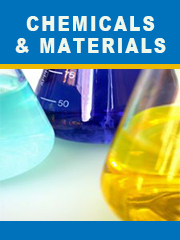Report overview
Lithium nickel cobalt manganese Oxide short form: NMC (NCM, CMN, CNM, MNC, MCN similar with different metal combinations) is kind of anode materials, which is mainly used to manufacture energy cells or power cells. This materials combines the lithium cobalt oxide is known for its high specific energy but poor stability; lithium manganese oxide has the benefit of forming a spinel structure to achieve low internal resistance but offers a low specific energy. Lithium nickel cobalt manganese oxide combining the metals enhances each other strengths.
This report aims to provide a comprehensive presentation of the global market for Lithium Nickel Cobalt Manganese Oxide, with both quantitative and qualitative analysis, to help readers develop business/growth strategies, assess the market competitive situation, analyze their position in the current marketplace, and make informed business decisions regarding Lithium Nickel Cobalt Manganese Oxide. This report contains market size and forecasts of Lithium Nickel Cobalt Manganese Oxide in global, including the following market information:
Global Lithium Nickel Cobalt Manganese Oxide Market Revenue, 2018-2023, 2024-2029, ($ millions)
Global Lithium Nickel Cobalt Manganese Oxide Market Sales, 2018-2023, 2024-2029, (MT)
Global top five Lithium Nickel Cobalt Manganese Oxide companies in 2022 (%)
The global Lithium Nickel Cobalt Manganese Oxide market was valued at US$ 1585.6 million in 2022 and is projected to reach US$ 1311.1 million by 2029, at a CAGR of -2.7% during the forecast period. The influence of COVID-19 and the Russia-Ukraine War were considered while estimating market sizes.
Global Lithium Nickel Cobalt Manganese Oxide key players include Umicore, NICHIA CORPORATION, Tanaka Chemical, L and F, 3M, etc. Global top five players hold a share about 35%.
China is the largest market, with a share about 35%, followed by South Korea and Japan, having a total share about 50 percent.
In terms of product, NMC111 is the largest segment, with a share about 45%. And in terms of application, the largest application is Battery materials for small mobile devices, followed by Battery materials for EV of Large-scale LIB.
We surveyed the Lithium Nickel Cobalt Manganese Oxide manufacturers, suppliers, distributors and industry experts on this industry, involving the sales, revenue, demand, price change, product type, recent development and plan, industry trends, drivers, challenges, obstacles, and potential risks.
Total Market by Segment:
Global Lithium Nickel Cobalt Manganese Oxide Market, by Type, 2018-2023, 2024-2029 ($ Millions) & (MT)
Global Lithium Nickel Cobalt Manganese Oxide Market Segment Percentages, by Type, 2022 (%)
NMC111
NMC532
NMC442
Others
Global Lithium Nickel Cobalt Manganese Oxide Market, by Application, 2018-2023, 2024-2029 ($ Millions) & (MT)
Global Lithium Nickel Cobalt Manganese Oxide Market Segment Percentages, by Application, 2022 (%)
Notebook
Tablet PC
Portable power
Electric tool
Electric bicycle
Others
Global Lithium Nickel Cobalt Manganese Oxide Market, By Region and Country, 2018-2023, 2024-2029 ($ Millions) & (MT)
Global Lithium Nickel Cobalt Manganese Oxide Market Segment Percentages, By Region and Country, 2022 (%)
North America
US
Canada
Mexico
Europe
Germany
France
U.K.
Italy
Russia
Nordic Countries
Benelux
Rest of Europe
Asia
China
Japan
South Korea
Southeast Asia
India
Rest of Asia
South America
Brazil
Argentina
Rest of South America
Middle East & Africa
Turkey
Israel
Saudi Arabia
UAE
Rest of Middle East & Africa
Competitor Analysis
The report also provides analysis of leading market participants including:
Key companies Lithium Nickel Cobalt Manganese Oxide revenues in global market, 2018-2023 (Estimated), ($ millions)
Key companies Lithium Nickel Cobalt Manganese Oxide revenues share in global market, 2022 (%)
Key companies Lithium Nickel Cobalt Manganese Oxide sales in global market, 2018-2023 (Estimated), (MT)
Key companies Lithium Nickel Cobalt Manganese Oxide sales share in global market, 2022 (%)
Further, the report presents profiles of competitors in the market, key players include:
Umicore
NICHIA CORPORATION
Tanaka Chemical
LandF
3M
TODA KOGYO CORP
BASF
AGC SEIMI CHEMICA
Shanshan Advanced Materials
Jinhe New materials
CEC
Xiamen Tungsten
Tianli
Easpring Material Technology
Kelong NewEnergy
Tianjiao Technology
Changyuan Lico
STL
Outline of Major Chapters:
Chapter 1: Introduces the definition of Lithium Nickel Cobalt Manganese Oxide, market overview.
Chapter 2: Global Lithium Nickel Cobalt Manganese Oxide market size in revenue and volume.
Chapter 3: Detailed analysis of Lithium Nickel Cobalt Manganese Oxide manufacturers competitive landscape, price, sales and revenue market share, latest development plan, merger, and acquisition information, etc.
Chapter 4: Provides the analysis of various market segments by type, covering the market size and development potential of each market segment, to help readers find the blue ocean market in different market segments.
Chapter 5: Provides the analysis of various market segments by application, covering the market size and development potential of each market segment, to help readers find the blue ocean market in different downstream markets.
Chapter 6: Sales of Lithium Nickel Cobalt Manganese Oxide in regional level and country level. It provides a quantitative analysis of the market size and development potential of each region and its main countries and introduces the market development, future development prospects, market space of each country in the world.
Chapter 7: Provides profiles of key players, introducing the basic situation of the main companies in the market in detail, including product sales, revenue, price, gross margin, product introduction, recent development, etc.
Chapter 8: Global Lithium Nickel Cobalt Manganese Oxide capacity by region & country.
Chapter 9: Introduces the market dynamics, latest developments of the market, the driving factors and restrictive factors of the market, the challenges and risks faced by manufacturers in the industry, and the analysis of relevant policies in the industry.
Chapter 10: Analysis of industrial chain, including the upstream and downstream of the industry.
Chapter 11: The main points and conclusions of the report.
